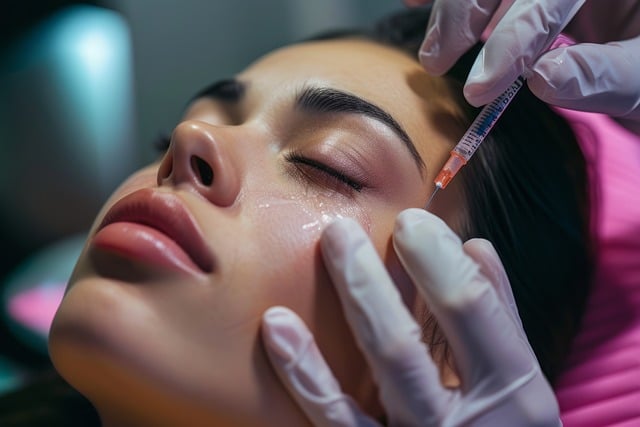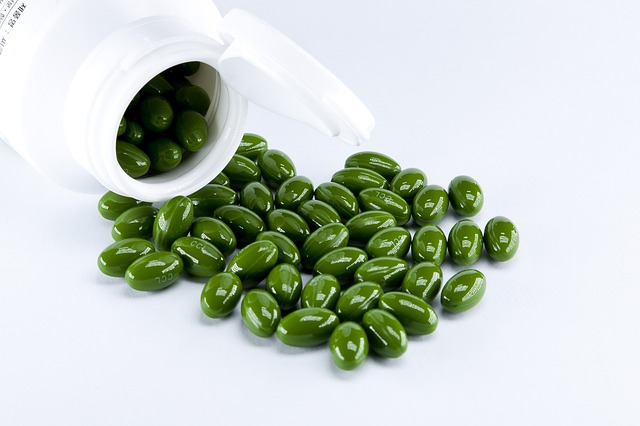Botox has emerged as a powerful tool in the quest for youthful-looking skin, revolutionizing anti-aging practices. This article explores the science behind its effectiveness in reducing fine lines and wrinkles, offering an insightful guide to Botox treatments. From understanding the procedure to choosing the right dose and considering potential side effects, we’ll take you through every step. Uncover the benefits of this popular anti-aging solution and learn how maintenance care can ensure long-lasting results.
Understanding Botox: The Science Behind Its Anti-Aging Properties

Botox, a protein derived from bacteria, has gained immense popularity as a non-invasive anti-aging treatment. Its scientific name, botulinum toxin, might sound intimidating, but its controlled application offers remarkable results in reducing the appearance of fine lines and wrinkles. The key to its success lies in its ability to temporarily paralyze or relax specific muscle groups responsible for creating dynamic facial lines.
The science behind Botox’s anti-aging properties is quite fascinating. When injected into the skin, it blocks nerve signals that stimulate muscle contraction. This action prevents the repetition of facial expressions that contribute to wrinkle formation. Over time, as the muscles relax and remain in a less contracted state, the skin appears smoother and more youthful. Additionally, Botox treatments can stimulate collagen production, further enhancing the anti-aging effect by improving overall skin texture and elasticity.
Benefits of Botox for Reducing Fine Lines and Wrinkles

Botox treatments have emerged as a popular anti-aging solution, offering a non-invasive approach to reducing fine lines and wrinkles. This cosmetic procedure involves injecting a small amount of botulinum toxin into specific muscle groups, which temporarily paralyzes them. The result? A smoother, more youthful complexion. By relaxing the muscles responsible for facial frowns and creases, Botox can significantly lessen the appearance of age-related wrinkles, especially around the eyes, forehead, and mouth.
One of the key advantages of Botox is its ability to provide long-lasting results with minimal downtime. After the treatment, patients may experience temporary redness or mild swelling, but these side effects are usually brief. As the muscle relaxation takes effect, it allows for a more relaxed state of the skin, giving it a chance to heal and regenerate, leading to a rejuvenated look that can last for several months. This effectiveness and convenience make Botox treatments an appealing option for those seeking a natural way to combat the signs of aging.
The Procedure: What to Expect During a Botox Treatment Session

Botox treatments have become a popular anti-aging solution, offering a non-surgical way to reduce the appearance of fine lines and wrinkles. During a typical Botox treatment session, a healthcare professional will begin by consulting with you to understand your concerns and goals. They’ll assess your facial structure and skin health to determine the optimal dose and injection sites. The procedure itself is usually quick, often taking less than 30 minutes.
After cleansing your face, the provider will use a fine needle to inject Botox into specific muscles. You may feel a brief pinch or stinging sensation at each site. The injections target dynamic lines—those that form when you frown, squint, or smile—aiming to prevent muscle contraction and subsequent creasing of the skin. Post-treatment, mild redness or swelling is common but typically subsides within a few hours. It’s advisable to avoid strenuous activities for the first 24 hours and to refrain from makeup application until the following day.
Choosing the Right Dose and Areas for Targeted Aging Prevention

When considering Botox treatments for anti-aging, one of the most crucial aspects is selecting the appropriate dose and target areas for optimal results. The right dose varies from person to person, depending on factors like age, skin type, and the degree of aging you wish to prevent. A qualified dermatologist will assess your specific needs and determine the ideal quantity of Botox to inject into targeted muscle groups.
Common areas for focused treatment include forehead lines, crow’s feet around the eyes, and vertical wrinkles between the brows. By strategically injecting Botox into these areas, practitioners can smooth out fine lines and wrinkles, preventing them from deepening over time. This approach ensures that your results are both natural-looking and long-lasting, providing a youthful glow without drastic measures.
Potential Side Effects and Risks: Being Informed Before You Proceed

Botox treatments have become a popular anti-aging solution, but it’s crucial to understand the potential side effects and risks involved before proceeding. While Botox is generally safe when administered by a qualified medical professional, there are temporary discomforts and possible complications to be aware of. Some common side effects include mild bruising, swelling, or pain at the injection site, which usually subside within a few days. More serious but rare risks may include systemic reactions, such as headaches, nausea, or difficulty breathing, which warrant immediate medical attention.
Before undergoing any Botox treatment, patients should have an open and honest discussion with their provider about their medical history, expected outcomes, and potential drawbacks. This informed consent process ensures that individuals make well-informed decisions tailored to their specific needs and circumstances, enhancing the likelihood of positive outcomes while mitigating the risks associated with Botox treatments.
Maintenance and Follow-up Care for Long-Lasting Results

Botox treatments, while effective for anti-aging, require maintenance and follow-up care to ensure long-lasting results. The effects of Botox typically last between 3 to 6 months, after which time the muscle activity returns to normal, causing wrinkles to reform. Regular touchups are essential to maintain the desired aesthetic. Skilled dermatologists or medical estheticians can schedule these maintenance treatments at intervals suited for each individual’s needs and lifestyle.
Follow-up care involves staying hydrated, avoiding excessive sun exposure, and maintaining a healthy diet. Additionally, it’s crucial not to massage the treated areas and to avoid certain medications that could enhance bleeding, as this may impact the procedure’s outcome. Regular consultations with a healthcare professional can help tailor these aftercare instructions for optimal results and to address any concerns promptly.
